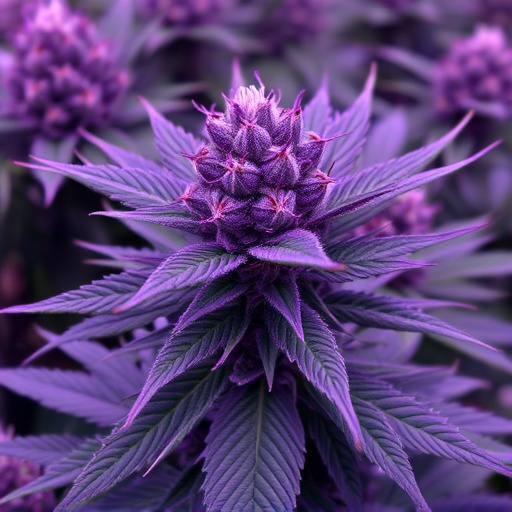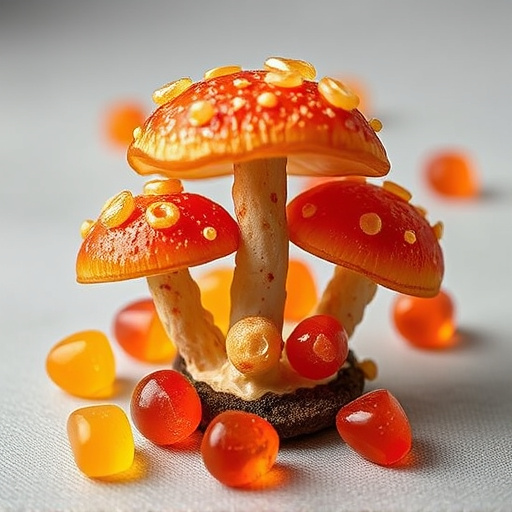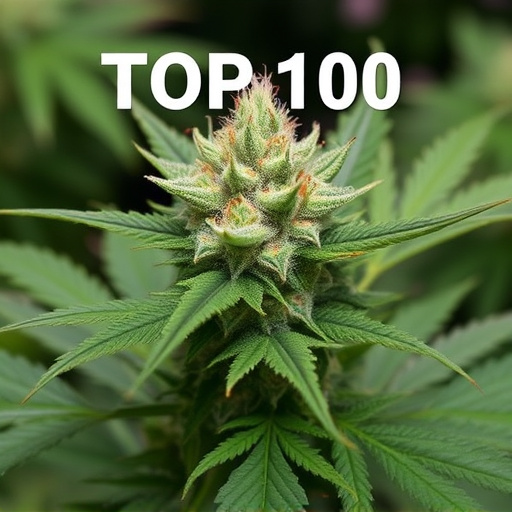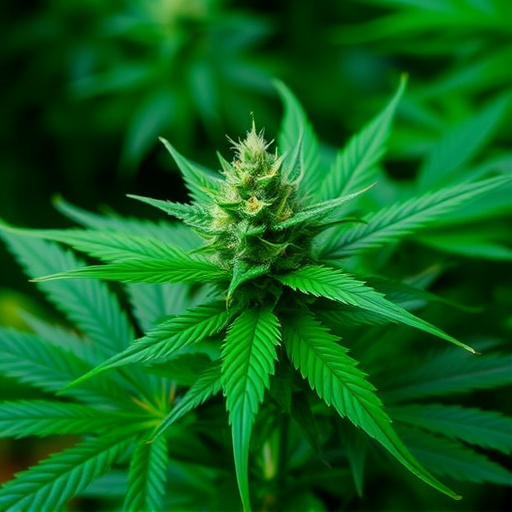The unique therapeutic qualities of cannabis are attributed to its terpene profiles, which influence flavor, scent, and interactions with the body's endocannabinoid system (ECS). Indica strains like Granddaddy Purple and Northern Lights, rich in myrcene, offer calming effects for stress and pain relief. Sativa varieties such as Blue Dream and OG Kush, high in limonene and terpinolene, stimulate creativity and energy levels. Understanding terpene-rich strains enables customization of cannabis experiences based on specific health needs. The most popular cannabis strains (Indica and Sativa) provide targeted relief for conditions like anxiety, insomnia, chronic pain, depression, fatigue, and neurological disorders, interacting with the ECS to regulate mood, memory, pain, and appetite. Consumption methods vary from smoking to vaporization and edibles, each offering distinct experiences; personalized choices cater to individual preferences and health considerations.
Discover the surprising health benefits of cannabis flower, a natural wonder gaining mainstream recognition. This comprehensive guide explores how specific strains and their unique terpene profiles offer targeted relief for various conditions. From anxiety and pain management to sleep aids, we delve into the science behind cannabis. Learn about consumption methods tailored to individual needs, making it accessible for everyone to unlock its healing potential. Uncover why the most popular cannabis strains are making headlines in wellness circles.
- Unlocking the Healing Potential: Common Cannabis Strains and Their Terpene Profiles
- Addressing Specific Health Conditions: Targeted Relief from Cannabis Flower
- Navigating Consumption Methods: Optimizing Benefits for Individual Needs
Unlocking the Healing Potential: Common Cannabis Strains and Their Terpene Profiles
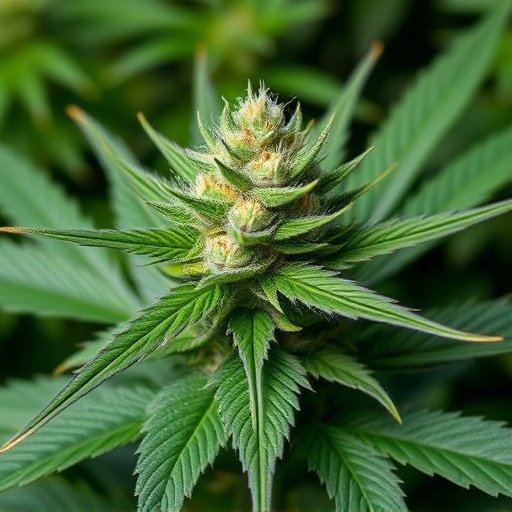
Cannabis flower has gained significant attention for its therapeutic properties, and understanding the unique characteristics of various strains is crucial in unlocking their healing potential. The power of cannabis lies in its diverse terpene profiles—the aromatic compounds responsible for each strain’s distinct flavor and scent. Terpenes not only enhance the overall experience but also interact with our bodies’ endocannabinoid system, contributing to potential health benefits.
Among the most popular cannabis strains, Indica varieties are renowned for their calming effects, often used to alleviate stress, anxiety, and promote restful sleep. Strains like Granddaddy Purple and Northern Lights boast terpene profiles rich in myrcene, a known muscle relaxant and pain reliever. In contrast, Sativa strains tend to stimulate creativity and energy levels, making them popular for daytime use. Examples include Blue Dream and OG Kush, which feature terpenes like limonene and terpinolene, known for their uplifting and energizing properties. Exploring these terpene-rich strains allows individuals to tailor their cannabis experience to specific health needs, harnessing the healing potential of this versatile plant.
Addressing Specific Health Conditions: Targeted Relief from Cannabis Flower

Cannabis flower has gained significant attention for its potential health benefits, offering targeted relief for a variety of specific conditions. Among the most popular cannabis strains known for their therapeutic properties are Indica and Sativa varieties. Indica, with its calming effects, is often recommended for managing anxiety, insomnia, and chronic pain. Its relaxing properties make it particularly effective in soothing sore muscles and reducing inflammation. On the other hand, Sativa strains are favored for their uplifting and energizing effects, making them suitable for treating depression, fatigue, and certain neurological disorders like multiple sclerosis (MS).
The targeted relief provided by cannabis flower is due to its unique composition of cannabinoids, such as THC and CBD. These compounds interact with the body’s endocannabinoid system (ECS), playing a crucial role in regulating mood, memory, pain perception, and appetite. For instance, THC can bind to CB1 receptors in the brain, potentially reducing anxiety and inducing sleepiness, while CBD interacts more subtly, offering anti-inflammatory and neuroprotective effects without the psychoactive properties of THC. This targeted approach makes cannabis flower a promising alternative or adjunct treatment for many health conditions, as it can help manage symptoms and improve overall well-being.
Navigating Consumption Methods: Optimizing Benefits for Individual Needs
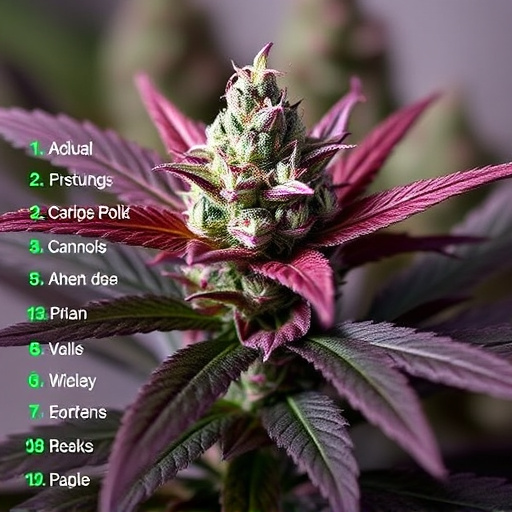
Navigating consumption methods is crucial in optimizing the benefits of cannabis flower for individual needs. The most popular cannabis strains offer a range of options, from traditional smoking to modern vaporization and edibles. Smoking remains a common method, known for its fast-acting effects, but it’s not always the healthiest due to the potential risks associated with inhalation.
Vaporizers, on the other hand, provide a cleaner and more controlled experience by heating cannabis instead of burning it, reducing exposure to harmful chemicals. Edibles are gaining popularity for their discrete and long-lasting effects, perfect for those seeking relief without the sensory experiences of smoking or vaping. Exploring different consumption methods allows individuals to tailor their cannabis experience to their specific preferences and health requirements.
Cannabis flower offers a plethora of health benefits, with various strains catering to specific needs. By understanding terpene profiles and exploring different consumption methods, individuals can unlock targeted relief for a range of conditions. The most popular cannabis strains often provide the best starting points for those new to this healing plant, offering both therapeutic effects and enjoyable experiences. Whether for pain management, anxiety reduction, or enhanced sleep quality, cannabis flower has proven its worth as a valuable addition to holistic wellness routines.





